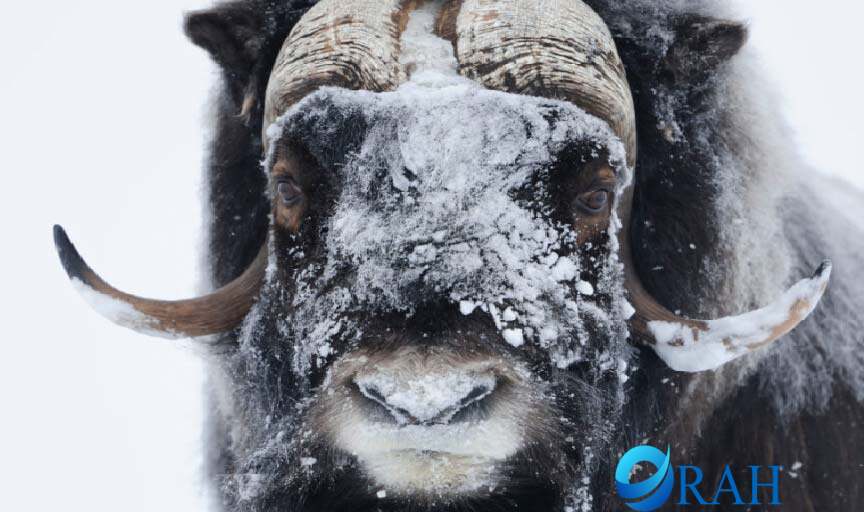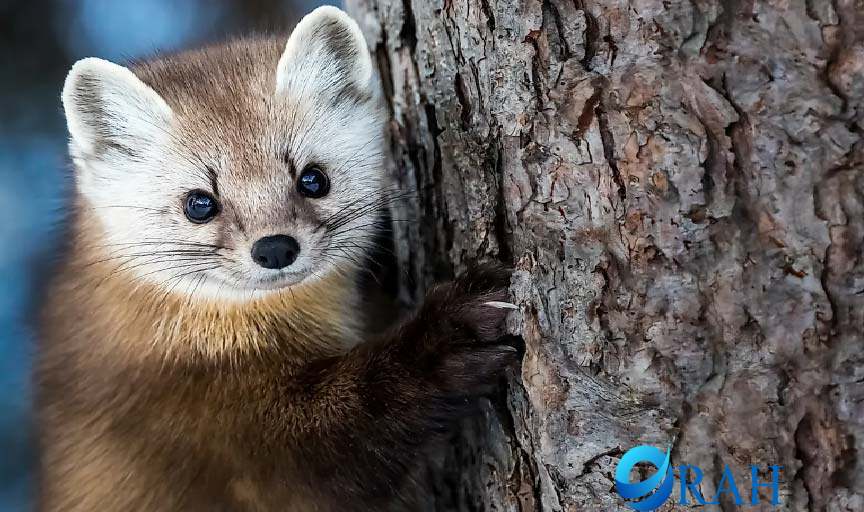Hudson Bay’s Diverse Wildlife: An Overview
Hudson Bay, located in northeastern Canada, is home to an incredible array of wildlife species uniquely adapted to its harsh Arctic and sub-Arctic environments. Stretching over 1.23 million square kilometers, this massive body of water supports an ecosystem that has evolved to withstand severe winters, seasonal ice cover, and a mix of marine and terrestrial environments. From polar bears to beluga whales, the Hudson Bay region boasts an astonishing variety of animals that play a crucial role in maintaining ecological balance.
Polar Bears: The Kings of the Arctic
Characteristics and Habitat
Known for their strength, size, and adaptability, polar bears (Ursus maritimus) are among the most iconic species in Hudson Bay. Adapted to cold environments, these large mammals rely on the bay’s sea ice to hunt seals, which are their primary food source. Polar bears have evolved thick layers of fat and dense fur, which enable them to endure the freezing temperatures that dominate the region for much of the year.
Hunting and Migration Patterns
Polar bears’ survival is closely linked to the seasonal ice cover in Hudson Bay. During winter, they venture far across the ice to hunt seals. In the summer, as the ice melts, polar bears are forced to come ashore, where they undergo a period of fasting until the ice returns in the fall. This annual migration and adaptation highlight the species’ resilience and dependence on the delicate balance of the Hudson Bay environment.
Beluga Whales: Gentle Giants of the Bay
Appearance and Behavior
Beluga whales (Delphinapterus leucas) are well-known residents of Hudson Bay, particularly during the summer months. Recognizable by their white skin and “smiling” faces, these sociable marine mammals are often found in large pods and are known for their extensive range of vocalizations, which earned them the nickname “canaries of the sea.”
Seasonal Migration
Belugas migrate to the warmer, shallow waters of Hudson Bay in summer, where they feed on fish and breed. These summer months also provide a respite from the colder, open waters of the Arctic Ocean. Belugas’ predictable seasonal migration patterns have made Hudson Bay a prime location for whale watching, drawing both researchers and tourists eager to witness these creatures up close.
Arctic Foxes: Resilient Predators of the North
Unique Adaptations
Arctic foxes (Vulpes lagopus) are small yet highly adaptable predators found in Hudson Bay’s tundra and coastal areas. These foxes have thick, white fur in winter, which provides camouflage in the snow, while their coat changes to brown or grey in summer to blend into the tundra landscape. This seasonal change allows them to hunt effectively year-round.
Diet and Survival Strategies
Arctic foxes are opportunistic feeders, consuming everything from small mammals like lemmings to fish, seabirds, and carrion left by larger predators such as polar bears. Their adaptability to diverse food sources and harsh environments has enabled them to thrive in Hudson Bay’s challenging ecosystem.
Caribou: Endurance and Migration of the Tundra’s Herbivores
Role in the Ecosystem
Caribou, also known as reindeer (Rangifer tarandus), are large herbivores that roam Hudson Bay’s tundra and boreal forests. As herbivores, they play a vital role in maintaining the balance of plant life in the region and serve as prey for several predators.
Long-Distance Migrations
Hudson Bay’s caribou populations are known for their impressive migrations, covering thousands of miles each year between summer breeding grounds and winter feeding areas. These migrations, one of the longest of any land animal, are essential for the species’ survival, allowing caribou to find adequate food and evade predators.
Ringed Seals: Vital Prey for Polar Bears
Importance in the Food Chain
Ringed seals (Pusa hispida) are a primary food source for Hudson Bay’s polar bears, playing an essential role in the region’s food web. These seals are adapted to life in icy waters, with a layer of blubber to insulate them from the cold.
Breeding and Pup Survival
During spring, ringed seals build dens in the sea ice to give birth and protect their pups from the elements and predators. The survival of these pups is crucial not only for the seal population but also for polar bears, who rely on young seals as a rich source of fat and energy.
Snowy Owls: Majestic Hunters of the Tundra
Physical Adaptations
The snowy owl (Bubo scandiacus) is one of the most visually striking birds found in Hudson Bay, with its pure white feathers that provide camouflage in the snow. These feathers also offer insulation, helping the owl survive cold winters.
Hunting Techniques and Diet
Snowy owls primarily hunt lemmings, a staple of the Arctic diet, but they also feed on other small mammals and birds. Their hunting skills and ability to endure extreme cold make them well-suited to the Hudson Bay environment, where they are a key predator in the food web.
Wolves: Predators with Complex Social Structures
Pack Dynamics and Hunting Strategies
Wolves (Canis lupus) roam Hudson Bay’s boreal forests and tundra, living in tightly knit packs with complex social structures. Their cooperative hunting techniques enable them to take down large prey, such as caribou and other ungulates, despite the challenging terrain and climate.
Role in the Ecosystem
Wolves are apex predators in the Hudson Bay area, helping to maintain balance by controlling populations of herbivores. This role is critical in preventing overgrazing and supporting the overall health of the ecosystem.
Muskoxen: Survivors of the Ice Age

Physical and Behavioral Traits
Muskoxen (Ovibos moschatus) are large, shaggy mammals well adapted to the cold climate of Hudson Bay. With a dense double-layer coat and a diet consisting of mosses and lichens, they are among the few herbivores able to survive the tundra’s harsh winters.
Threats and Conservation
Muskoxen populations are generally stable in Hudson Bay, but they face challenges from changing climate conditions and potential predators. Conservation efforts are focused on monitoring populations to ensure their continued survival in this fragile ecosystem.
Conservation Challenges and Climate Change Impact
Habitat Loss and Shrinking Ice Cover
The effects of climate change pose a significant threat to Hudson Bay’s wildlife. Warmer temperatures are causing ice cover to shrink, reducing critical hunting and breeding grounds for species like polar bears and seals. This loss of ice forces animals to adapt or migrate further to find food, impacting their survival rates.
Conservation Efforts and Future Outlook
Conservation groups and local authorities are working to protect Hudson Bay’s unique wildlife through various initiatives. Efforts include monitoring animal populations, regulating hunting practices, and raising awareness about the effects of climate change on Arctic ecosystems. International collaboration is also crucial, as many species in Hudson Bay are migratory and move beyond Canadian borders.
The Cultural Importance of Hudson Bay Wildlife
Indigenous Connections
For centuries, Indigenous communities around Hudson Bay have relied on local wildlife for subsistence, cultural practices, and spiritual significance. Animals such as caribou, seals, and fish are central to Indigenous diets and traditions. Many Indigenous groups are now collaborating with conservation organizations to protect these species and advocate for sustainable practices that support both the environment and local cultures.
Ecotourism and Education
Hudson Bay’s wildlife attracts numerous tourists each year, providing opportunities for ecotourism. Educational initiatives and responsible tourism practices are helping visitors understand the importance of preserving this unique habitat while minimizing human impact.
FAQs
What are the main animals found in Hudson Bay?
Hudson Bay hosts various animals, including polar bears, beluga whales, Arctic foxes, caribou, and snowy owls, all adapted to the region’s Arctic and sub-Arctic environment.
How does climate change impact Hudson Bay’s wildlife?
Climate change reduces sea ice, affecting the hunting and breeding grounds for polar bears and seals. These changes force wildlife to adapt or migrate to survive.
Why is Hudson Bay important for polar bears?
Hudson Bay is crucial for polar bears, providing hunting grounds on sea ice. During the summer, they come ashore as the ice melts, awaiting its return in the fall.
What is the significance of Hudson Bay’s beluga whale population?
Hudson Bay hosts a large seasonal population of beluga whales, which migrate to its warmer waters in summer for breeding and feeding.
Are there conservation efforts for Hudson Bay wildlife?
Yes, conservation groups are actively working to monitor animal populations, promote sustainable practices, and address the effects of climate change on the Hudson Bay ecosystem.
More Visit, Orah


Leave feedback about this